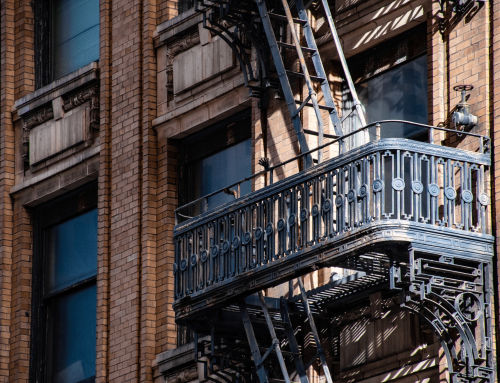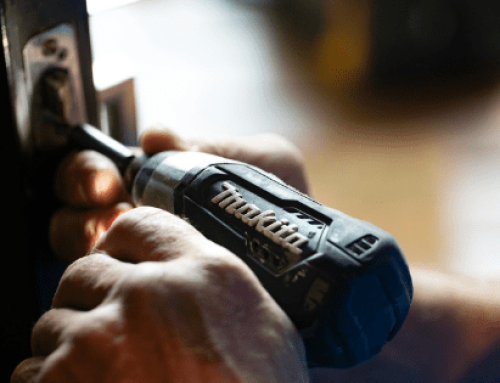Structural problems are a landlord, and even a property manager’s, worst nightmare. Structural issues can be deal breakers for attracting potential residents, but worse, can risk infringing health and safety regulations for current residents also.
But how can you spot if an apartment building has structural faults? Sometimes horizontal cracks can just be signs of settling, whilst uneven floors from what appears to be bad paving could be an indication of a building sinking into the earth.
It’s a fine – and nervous – line to walk, but both landlords and property managers should be well versed in spotting the warning signs. So, if you manage a property or properties in a residential block, here are some of the different signs of structural problems to look out for – and act on.
What is considered a structural problem?
Structural problems can be classed as anything that jeopardises the structural stability of a residential building. Their causes can vary from poor design or construction, to structural defects that have formed with age and wear since the residential block was constructed.
The difficulty with spotting structural problems is that they can present as very minor everyday home issues, such as sticking windows or doors that aren’t shutting properly. These could be very easy to dismiss as simply expansion caused by heat in either the wood of the door or its doorframe, or just weather wear on the windowsill. However, underneath even these easily minor annoyances could actually be signs of much bigger foundation issues, like subsidence.
What are the different types of structural problems?
Any kind of structural problem is considered urgent and serious. If left untreated, some of the below issues can have dangerous implications for safe and reliable block management, so should be acted upon instantly if suspected.
The two major structural problems to look out for with apartment buildings are heave and subsidence.
Subsidence
When the ground conditions below a property change as a result of natural changes in the ground or soil depth, it can cause the foundations of a property to collapse or subside, which compromises the building’s entire structure and can cause one side of it to sink.
This causes various structural imperfections to appear, like bulging walls, gaps around doors, walls and windows and the appearance of major cracks throughout both internal and external walls.
Subsidence can happen to any building and isn’t indicative of age or even an initial structural issue – it is simply a natural occurrence that is a result of changes in the earth.
Properties built on clay should be especially wary of subsidence, as excessive hot and dry spells can cause the ground to crack as a consequence of losing moisture. Similarly, significant amounts of rainfall can wash away soil to the extent where the ground will lose integrity.
Watch out too for plants and trees near a residential block. When trees are too close to a building their roots can grow underneath, sucking moisture from the ground and drying out the earth.
Heave
Opposite to subsidence, heave is when the ground underneath a building begins to expand or move upward. It is commonly linked to changes in soil moisture levels, and just like subsidence it can cause major foundation problems to the structural integrity of a building as well as various implications for residents health and safety in communal areas of flats.
Heave commonly occurs as a result of removing trees, because the roots no longer suck up moisture which causes the soil to swell with too much. Leaking drains nearby can also over-moisture soil, and are another thing to be wary of.
Common signs of heave include cracking brickwork and vertical cracks around windows, as well as doors or windows becoming unable to close smoothly. Doors may also stick as their frames lose their square shape. Additionally, paths and patios surrounding the building are likely to bulge or become uneven.
Other structural issues to look out for
Exterior walls bulging or leaning
Problems with bowed walls, or walls that are suddenly bulging or leaning are incredibly difficult to spot because they start subtly. You may not notice an obvious curve inwards until much later.
All walls should be straight, so if you spot even one wall that looks to be curving inward it’s best to check other exterior walls at the same time. Curving, bulging or leaning walls are likely to indicate a serious structural problem. house walls
Sagging roof and roof leaks
A roof should last at least 20-30 years if properly maintained. If the roof of your building is falling short of that mark and is already leaking or sagging, or alternatively if cracks are appearing in the floor joists it might be an indication that the roof timbers are spreading apart.
Roofs that sag indicate structural problems caused by the loss of load-bearing walls, prolonged overloading, or misalignment of framing timbers. Roof leaks can be costly to repair since they can cause a lot of damage to internal components.
Foundation problems
As we mentioned above with subsidence and heave, the ground around where a building’s walls connect with the earth can show initial signs of foundation movement, which may be indicative of deeper foundation problems.
Things to look out for include:
- Cracks in the walls near the ground
- Soil pulling away from the building’s walls
- Drainage problems, like overflowing
For residential buildings it is also worth checking the building’s patio and any porch or deck areas. If soil here is pulling away from any posts, or you see cracks or uneven floors in these external spots it may mean the foundation has shifted.
After a particularly rough winter of weather it may be worthwhile using our complete Spring maintenance checklist for block managers.
Large cracks or uneven gaps in walls
Cracks are one of the biggest indicators of potential structural problems, but incidentally, not all of them suggest a serious issue. As a building settles, hairline cracks are a common and normal occurrence as a result of walls expanding and contracting with temperature changes.
It’s when cracks turn from hairline to thick and prominent that they should be taken as signs of potentially serious problems. Cracks are likely to be suggest structural problems if they are:
- Wider than 3mm (an easy way to measure this is if the crack is thicker than a 10p coin)
- Visible on both exterior and interior walls, or both sides of an internal wall.
- Close to, or surrounding, doors and windows
- Wide at the top and narrowing at the bottom whilst running diagonally
If you do notice any of the above cracks, it’s best to check interior walls and exterior brickwork, or stone siding, to see if there are any cracks visible in the building’s mortar joints. If there are, this is a matter of urgency and it’s time to call out a building surveyor or structural engineer.
What to do if a residential property block has structural damage
Enlist the help of a structural engineer
If a building looks to be suffering from significant structural damage, the first step for property managers or landlords is to call out a qualified surveyor who can visit the property. They may suggest closely monitoring the building for a set period of time without taking action, incase immediate action risks further damage to the building’s structure. Soil samples may be taken from around the foundations of the building, and it’s likely that the building’s foundations, walls and overall exterior structure will be evaluated.
Check your insurance
The cost of correcting problems will be determined by the type of structural problem, the size of the building’s structure and its age, as well as how early the signs were observed and how far reaching the problem extends.
However, all of this should be covered by a good buildings insurance policy, which will pay for the repairs though the insurance premium may increase as a result of the claim.
Whose responsibility is it to check the insurance? Use our definitive list of property management company responsibilities to find out.
Work with a residential property management company
At Scanlans, we are experts in property management and can spot the signs of a problem early on. Our expert property managers carry out regular site inspections so that we can spot problems before they turn into more serious issues, and we encourage all our clients to be proactive and get any small issues checked out as soon as possible to save money and hassle in the long run.
With over 25 years’ experience in property management, you and your property will be in safe hands. Find out more today.










Leave A Comment
You must be logged in to post a comment.